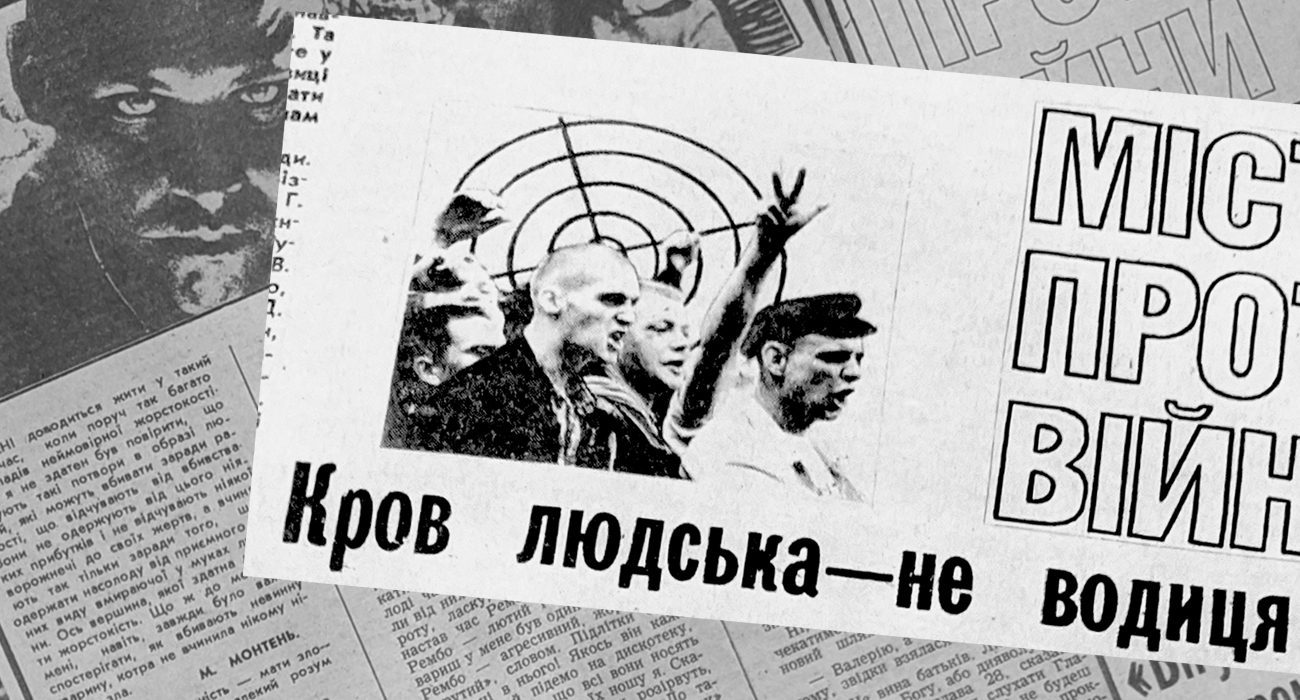In mid-80’s and beginning of 90’s, Kryvyi Rih was engulfed by the war of ‘runners’, so they used to call teenagers who formed hostile gangs and raided areas of their rivals. Over a decade of these gangs’ “activities” resulted in 28 children killed and one cop shot dead. More than two thousand teenagers were wounded, and medics would record hundreds of maiming incidents. The then legislation could not prevent any of such crimes, as minors under 16 years of age packing handguns and explosives could not face criminal liability. Zaborona’s journalist Samuil Proskuryakov was born and raised in Kryvyi Rih. He talked to some of the ‘runners’ and recounts the history of the gang. Per ‘runners’ requests, their names were changed in the narrative.
March 1992, Saksahanskyi District of Kryvyi Rih. Two teenager gangs hailing from different microraions harbor animosity against each other and a clash between them erupts. A 17-year-old Oleksii from Marshal Vasylevskyi Boulevard, or as locals call it ‘BMV’, took aim and fired a shot from his improvised pistol. A 15-year-old Fedya Savchuk from Yuvileinyi microrayon uttered a cry as the bullet pierced his hip and ruptured the artery. Three days later, the boy died in a hospital. Oleksii was caught by the police and did seven years of penal colony.
A 14-year-old Petya attended Fedya’s funeral. Two hours prior to the tragic shooting, the boys went to movies together. Now the eighth grader sees his friend in a coffin at the school line-up area. In opinion of parents, police and school administration, the dead Fedya in the schoolyard had to produce a therapeutic effect on students: this is what may happen if you join the ‘runners’. That’s what they used to call teenagers who united into gangs and would “divide tarmac” with other hooligan formations. Saksahanskyi District alone would account for more than ten such brigades, while the city of seven districts on the whole was a host to up to fifty gangs. Which meant thousands of children.
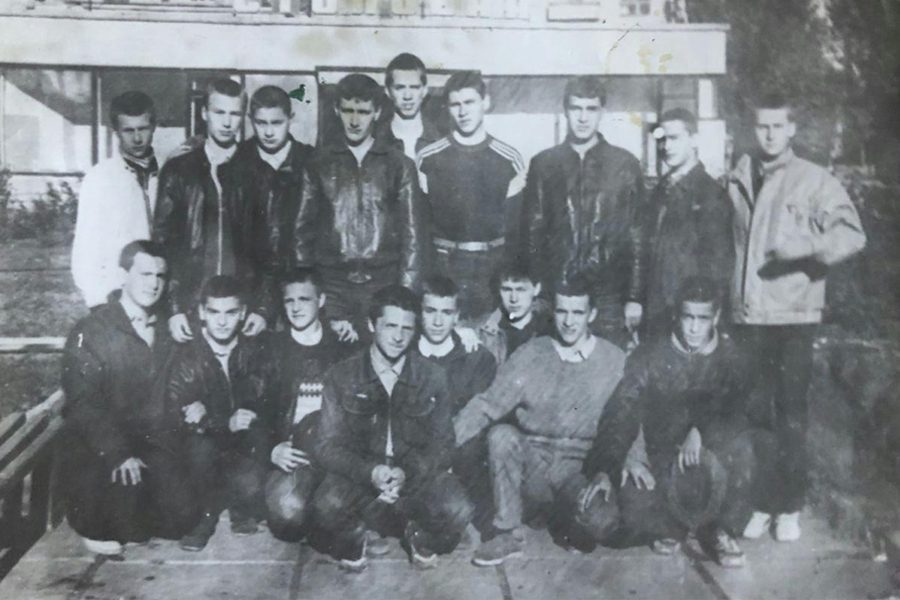
As opposed to Fedya, Petya was not a runner. The guy studied well, played drums and used to accompany a music group on trips, performed class monitor duties and even chaired the school monitors board. People like him should not become hooligans.
Chemistry teacher in her address called students not to take revenge. However, Petya was craving payback. He made a list of the guilty and in a few days handpicked own gang from his and neighboring schools. ‘Devil’s Dozen’ was the name Petya had chosen for the team of thirteen avengers.

The teenagers tracked down and thrashed two of the nine boys on the list, setting ablaze the apartment door of one more boy. Armed with hammers, knives, kitchen axes and two improvised pistols, the boys would fight ‘runners’ from BMV, Soniachnyi, 173rd Block and 3rd microraion. Six months later, some of the avengers would join ranks of one of the largest formations in Saksahanskyi District, ‘holubtsi’ (cabbage rolls) from Yuvileynyi.
Fedya was killed into the seventh year of the teenagers’ war in the streets of Kryvbas industrial area, when the number of fallen children reached almost twenty. At the “front” he was replaced with Petya.
‘Clockwork Orange’
Former police officer Serhiy Dratovanyi knows a lot about runners. He happened to be the chief of Saksahanskyi District Police Department at the time. “Ten years of war in Vietnam, ten years in Afghanistan. And same here, – he recalls – 28 killed and over two thousand wounded children, hundreds of the maimed and one policeman killed in the 17th Block. He was shot on a trolleybus from an improvised handgun by two runners from Ternivskyi District over a remark about them.”
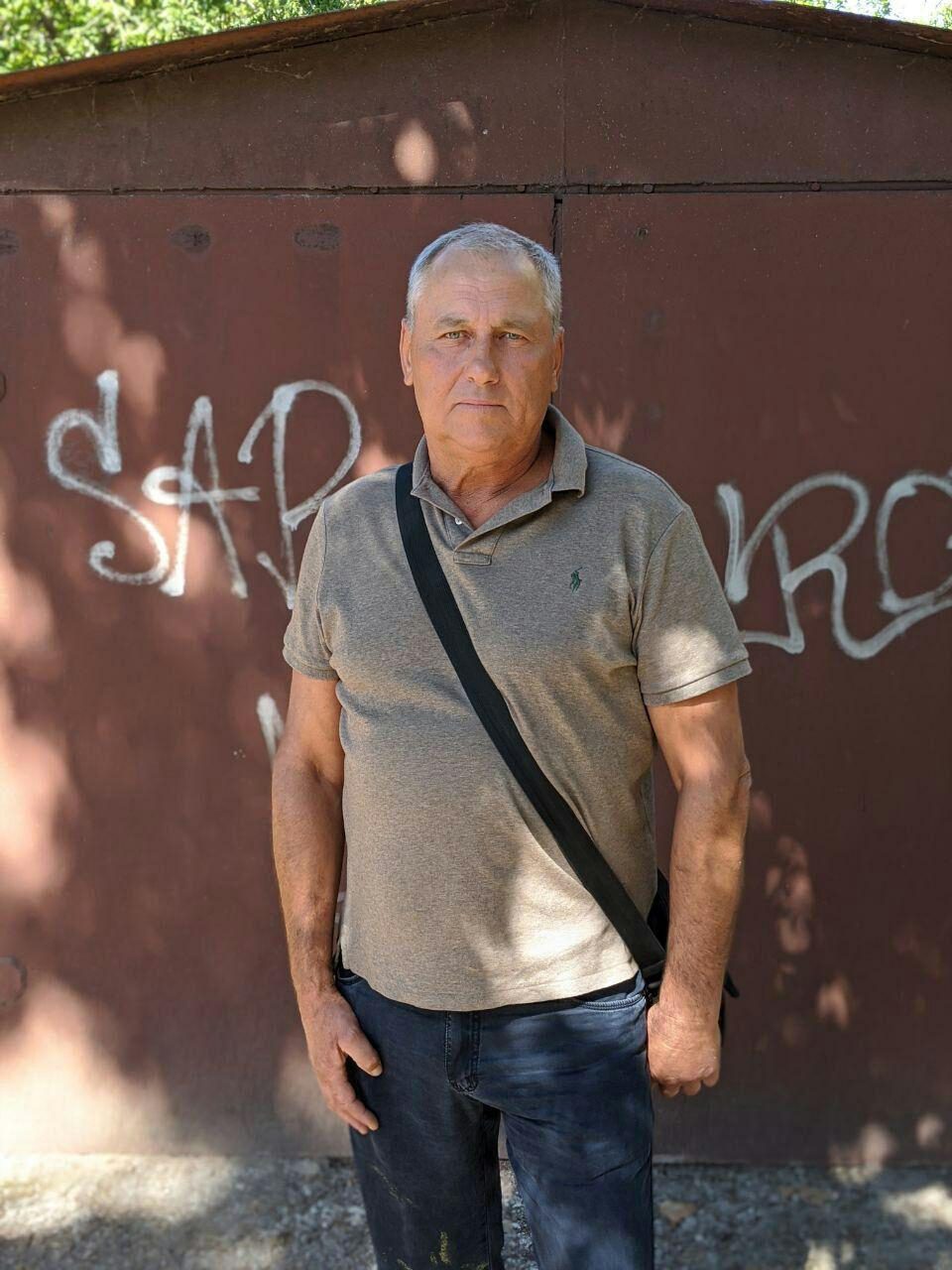
Dratovanyi added that at the time of restructuring (perestroika), law enforcement officers, sociologists and media from far and wide in the Soviet Union were talking about the so-called “Kazan phenomenon” (after the name of Tatarstan’s capital). That is the emergence of youth gangs based on territorial quality in large Soviet cities. It was in Kryvyi Rih where the phenomenon revealed itself at its largest scale.
Kryvyi Rih hooligans were called runners for their battle tactics: teenagers would dash through their rivals’ area in droves, throwing improvised hand grenades, using firearms and crashing everything in their way. They would even upend cars and police off-road vehicles (‘bobiks’). Runners would form detachments by place of their residence: microraion, block, avenue, boulevard. Other groups would receive such names as: ‘byky’ (bulls), ‘koni’ (studs), ‘vokzalni’ (railway guys), ‘gorkyi’, ‘deviatka’ (niner), ‘haliava’ (freebie), ‘holubtsi’ (cabbage rolls). But for the most part, rival gangs would call each other this: “faggots”.

Runners were not divided into lefties and righties, anarchists or neo-Nazis. This was a pure ultraviolence, just as in ‘A Clockwork Orange’ by Anthony Burgess used as the basis for Stanley Kubrick’s film of the same name. It’s that, but the runners weren’t doing drugs, at least en masse, and wouldn’t pick on grown-ups, girls, and boys who didn’t “run”. Although there were exceptions, like a 14-year-old Oleksandr Zherdiev, who did not belong to any of such groups, and just went outside to exchange videotapes with his female acquaintance. Having seen a detachment of runners dashing past him, the boy ran towards his apartment block’s entrance. A shot sounded and a bullet stuck in Oleksandr’s vertebra. Since then, he has to move around in a wheelchair.
Zaborona’s interlocutor Artem, who used to “run” in late 80’s, explains that most likely Oleksandr was misidentified as a hostile runner, because he had taken to heels. “Have no idea what it used to be like in other districts, but at our place they would stop suspicious guys who weren’t wearing runner’s garbs and ask “You run?” If a guy’s answer was “No”, we would leave him alone. But if later we would learn that he was indeed a runner, he would be whooped remorselessly next time he was seen”.
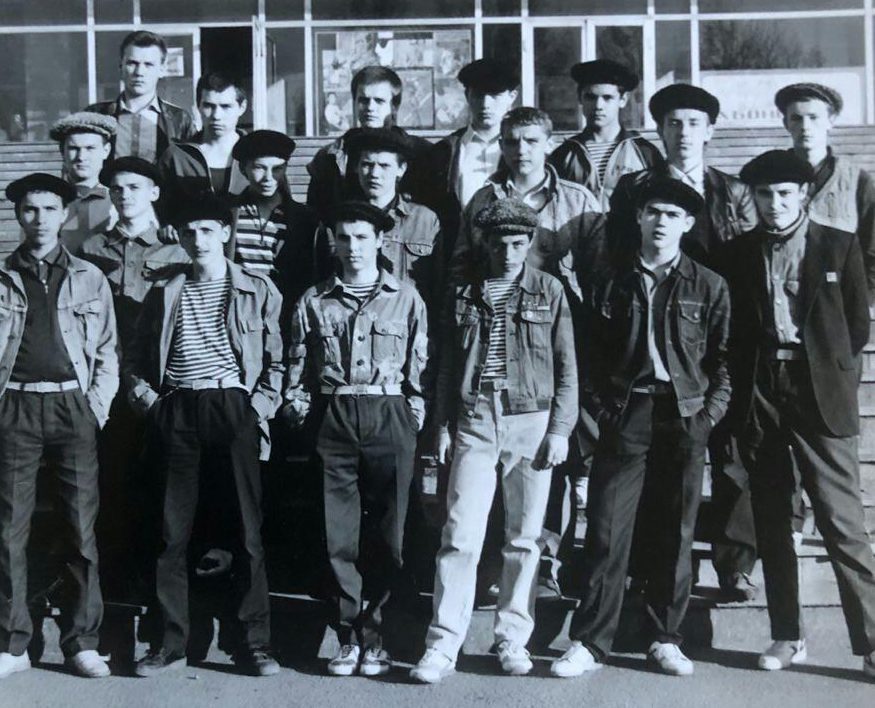
A detachment usually consisted of ‘seniors’ (aged 17-18), ‘juniors’ (15-16), ‘multyky’ (cartoonists) (14-15), and the youngest ‘pupsy’ (doofuses) (12-13). Runners were by no means appeasing towards the youngest: Back in 1990, a 13-year-old Vitaliy Chernikov had his skull caved in with a hammer, which resulted in the boy’s death. At the head of certain age group there were “top dogs” from among juniors and seniors. The entire brigade would usually be managed by a leader – ‘rudder’. ‘Seniors’ wore astrakhan fur caps, while ‘doofuses’ would have pompom hats. Senior runners would also wear belts with buckles of Rifle or Fu’S brands. Guys who did not run were risking big time if they had similar stuff on.
Fighters were recruited from among fellow school students and attendees of technical colleges and vocational schools.
“Raions are watching you, – recollects ex-runner Sasha. – They know everyone’s predisposition. Who the fighter, and who the coward is. They would let in the brave guys, and if they had doubts about someone, they would test him with a blow to the soul [a hefty punch in the chest]”. A solicitor who would manage not to lose his balance, would be admitted to the gang, says he, and the others would be chased away.
Toll and Improvised Firearms
Runners would impose a toll on teenagers who did not “run”: If those wanted to reach their school and get back safe and unharmed, they had to give away their lunch money every day. Victims wouldn’t report this to the police, being afraid of retribution. On top of it, runners demanded contributions from kiosks, produce and wholesale warehouses, and put dance floors and clubs under their “protectorate”. A treasurer would be responsible for money. In case of a runner’s death, his parents would be given a substantial share from the “money pot”, and his funeral costs would be covered.
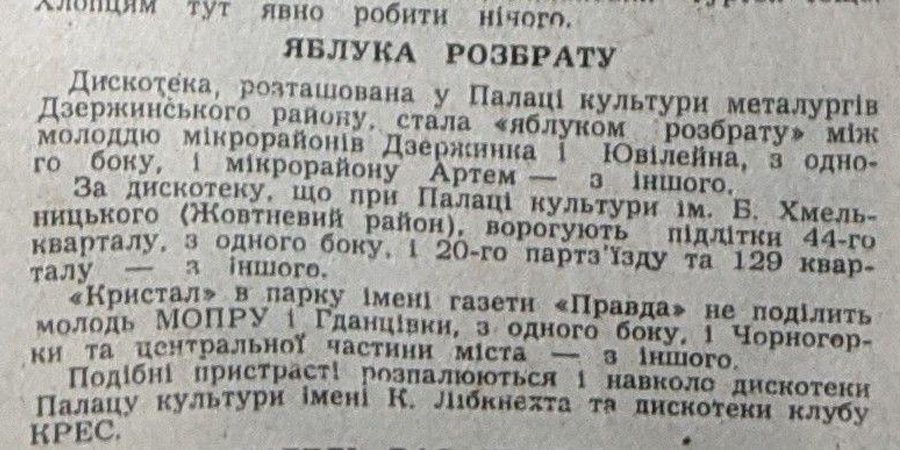
Bitter fights were waged for disco venues inside district palaces of culture. Artem, who used to “run” for almost three years, told how a brigade from the BMV attacked a disco in Yuvileynyi microraion. Runners blocked all entrances and exits, and then made an attempt to force their way onto the second floor, where the disco was in full swing. They were met with a barrage of chairs, tables and bottles flying at them, and the guys had to retreat.
Runners had their own weapons which was for the most part taken care of by students of technical colleges and vocational schools. They were called “armourers”, and used workbenches, tools and materials to make weapons in their leisure time. ‘Doofuses’ and ‘cartoonists’ would search metal and spare parts in dumpsters and garage areas for them.

Runners’ main weapon were improvised firearms, grenades and hammers. An improvised gun was simple to manufacture, but dangerous to use: a metal tube wrapped tight with a wire and fixed with screws or metal clamps to a wooden base. Powder or crumbled matchheads would be poured inside through the barrel, a newspaper wad would be densely pressed, all followed by the charge itself – a bullet cast from battery lead or nail heads.
In terms of lethal force improvised firearms are close to real weapons and can seriously injure or even kill. At the same time, such weapon is also dangerous for the shooter, as deficiencies in its structure may cause it to explode in hands as a shot is fired. This is what happened to a 14-year-old Valeriy Loshaniuk. The boy died of the sustained injuries in 1990.
They would modify soviet metal toy guns TT, PM, Mausers and cap pistols to house 5.6mm cartridges. A 14-year-old Natalia Komisarenko was lethally wounded by this type of weapon during a math class. Her classmate, a runner, was aiming at the teacher.

Improvised grenades were made of industrial electric fuses filled with sulphur, niter, manganese, nails, screws and bearings. The structure would be finished with fishing hooks attached to one of the fuse sides. Such grenade would firmly hook to clothes, like it happened to a 15-year-old friend of Zaborona’s interlocutor. The hooks stuck in his jeans, and the explosion injured genitalia and arteria, causing the teenager to bleed to death before an ambulance arrived.
City With No Prospects
A typical landscape for Kryvyi Rih is mine-microraion-wasteland-plant-block-river, and the same goes for over 67 kilometres. Kryvbas is a cluster of worker settlements surrounding mines, pits and processing enterprises which due to certain circumstances have expanded to enormous sizes of industrial slums with over half a million residents.
The operative Serhiy Dratovanyi says the city’s very structure was conducive to a powerful hooligan movement. Kryvyi Rih is excessively elongated, therefore distances here are abnormal even for an industrial city, while its districts are widely separated.

In Soviet times, convicts in petty crimes like fraud, theft and parasitism were transferred from all over Ukraine to Kryvbas. They lived in special dormitories under the watch of law enforcers and worked at enterprises with conditions unsafe for health or demanding hard work, which common folk called “chemistry”. After doing their time, many “chemists” would stay in the city. They would work and start a family, buy or have housing allocated to them, give birth to and rear children.
These great numbers of convicts formed a criminal subculture, romantic fondness for thieves. Children thought that criminal world bosses were the most decent people who could be trusted, while the police and the state were the bad guys. Teenagers were fascinated with thieves’ customs and rules.

Kryvbas was significantly behind in terms of social infrastructure corresponding to teenagers’ needs. New microraions would emerge, but no cinemas, sport complexes, musical or rehearsal studios would be built in them. Parents worked long hours, sometimes managing two-three jobs. They rarely saw their children and knew little about their way of life.
Local authorities were busy re-dividing turfs, not giving a toss about problematic teenagers. While the police were fighting and making deals with “serious” criminals, – recalls Dratovanyi. The entire Saksahanskyi District had just four law enforcement officers working runner cases: two operatives, including Serhiy Dratovanyi in particular, who had the rank of lieutenant then, and two representatives from the Service for minors.
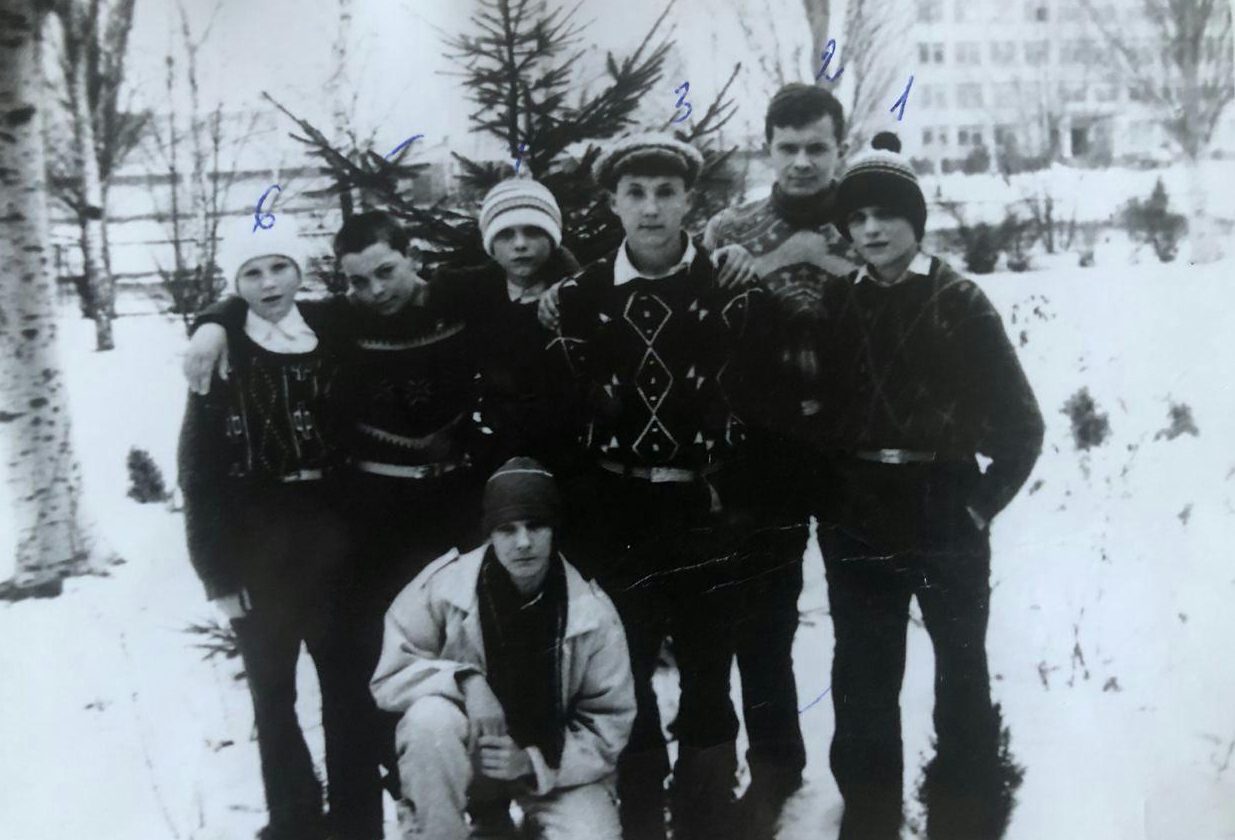
“Technical equipment was non-existent: an old bus they gave us would start once in a while, – recounts the former operative. – We had to move runners to our department by trolleybus. We would tie them up with her own belts, as we weren’t equipped with handcuffs either, and convoy them by public transport. What else could we do?”
The Criminal Code dating back to 1960 provided for a liability for illegal carrying, manufacturing, storing of firearms and explosives only starting from age 16. Children under age 14, who would commit major crimes, a murder in particular, were to be sent to special schools and colonies. Accessories would be given conditional sentences.
End of Runners
In the evening of November 4, 1992, three law enforcement officers responded to a call where they met 26 runners. The police fired more than five warning shots in the air, demanding to drop their weapons and stop the turmoil. However, the teenagers started throwing fuses at the officers and shooting from improvised guns. The police used weapons and one of the operatives shot a 17-year-old runner, and the boy died. Later, runners brought a huge stone to the place of his death, where it remains up until now.

“I am not blaming him, – says the former runner Petya. One can understand the man, who has a wife and children waiting for him at home, while here some underage dolts are aiming their guns at him. Very unfortunate that it happened, but the guy just didn’t have a choice”.
After this killing, the local authorities had to seriously tackle the runners and the raiding wave died away. But, in 1993, two runners from Ternivskyi District shot and killed a policeman Dmytro Voichyshyn who made a remark about them while on a trolleybus. More victims among children were yet to happen, and in 1995, the counter would stop at the mark of 28 killed teenagers.
Lord of the Flies
At the age 18, Sasha was drafted into the army, and his penchant to destroy has gradually faded away – he just didn’t see a point in this anymore. Once, he met a friend of his, also a runner, and the fellow told he got married and found a job. After this conversation, Sasha pondered about own life, he says, – and decided to follow his friend’s lead. Sasha thought it would be nice to warn own son, so he wouldn’t make same mistakes. Similar stories were recounted by Artem and Petya, who broke away from hooliganism and gangsterism after the army.

Serhiy Dratovanyi believes their experience was typical: “the army corrected the behavior of nearly all runners – they returned different people. They found a job and started families”. At the same time, those who were sentenced for maiming and killing, for the most part, would join ranks of the organized crime or become addicts and drunks. “Many of them are not around anymore – either dead or were killed in gangster showdowns”, says the former police officer.
“I still don’t understand what it was, – confessed Sasha. As far as I know, even older criminals weren’t getting it, because runners didn’t have any profit from their crimes. It’s like in that novel, where boys were stranded on an uninhabited island and started killing each other [novel by William Golding “Lord of the Flies”].”
Main characters: Petya – Yuvileynyi microraion, ‘Devil’s Dozen’ gang, later – ‘holubtsi’, became a runner in mid-90’s, nowadays – a ATO/JFO veteran, defender of the Donetsk Airport;
Artem – Zhovtnevyi District, Yuvileynyi microraion, ‘holubtsi’ gang, used to be a runner at the end of 80’s – beginning 90’s, works at a ritual service agency;
Sasha – Zhovtnevyi District, Zarichnyi microraion, ‘byky’ gang in 1989-92, engineer;
Kolya – Ternivskyi District, Gorkyi Settlement, belonged to ‘gorkyi’ gang between 1990 and 1994, entrepreneur.
Our thanks go to VitaliyKozachenko, who is studying for the legal sciences candidate degree, for the preparation of the narrative and photographs.
Translated by Volodymyr Galamon

